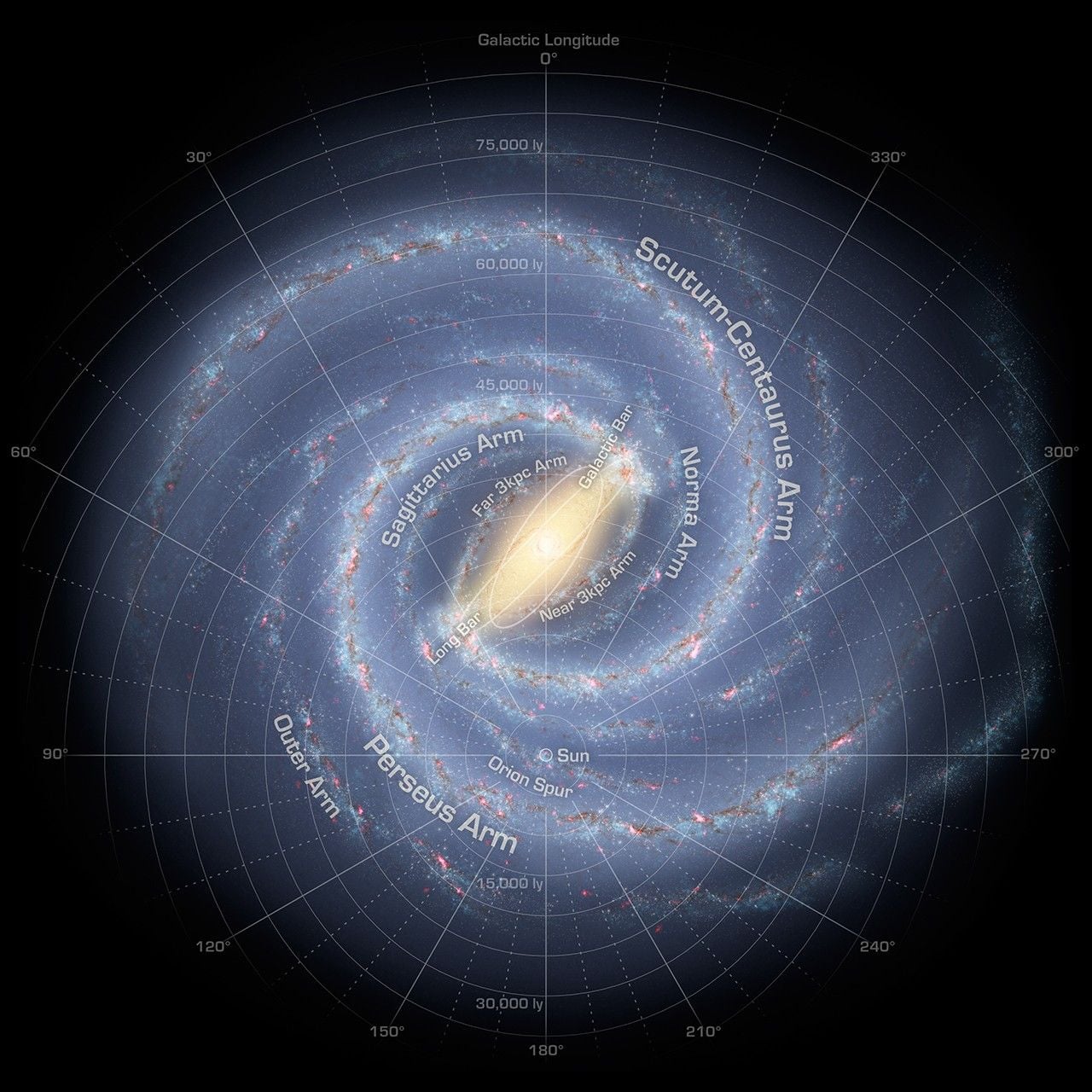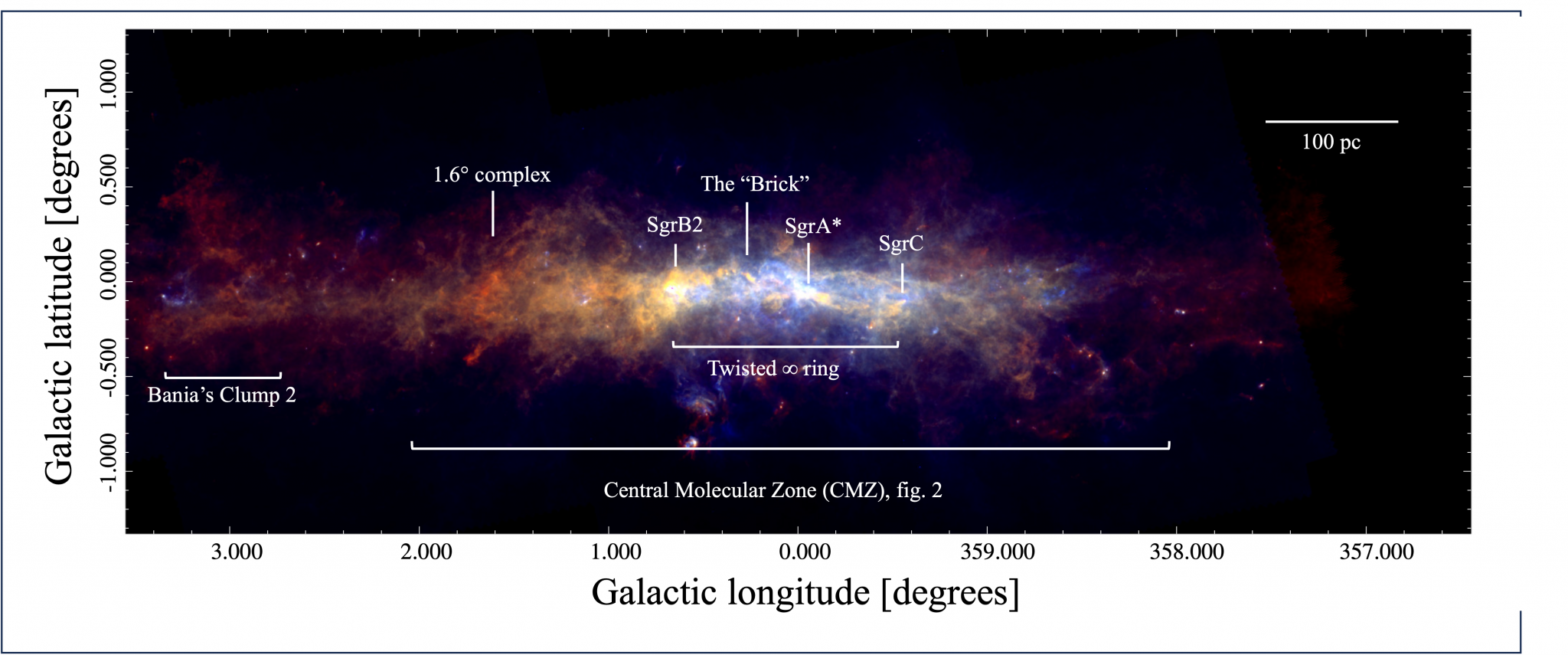At the core of our Galaxy, the Milky Way, lies a dense region that is home to a supermassive black hole known as Sagittarius A*. It weighs in at about 4 million times the mass of our Sun and exerts a gravitational pull so powerful it shapes the entire surrounding area. The core is surrounded by a region of gas, dust, and radiation, where stars are born in massive molecular clouds and die in spectacular supernovae. It's also where the Central Molecular Zone (CMZ) resides, a vast, chaotic area home to interstellar matter and powerful magnetic fields. This region is a cosmic engine, fuelling the formation of new stars while simultaneously holding the remnants of ancient ones, creating an ever-changing landscape at the very heart of our Galaxy.
 Illustration of the Milky Way (Credit : NASA/JPL-Caltech/R. Hurt)
Illustration of the Milky Way (Credit : NASA/JPL-Caltech/R. Hurt)
A team of UConn researchers led by Associate Professor Cara Battersby have created a comprehensive 3D model of the Milky Way's CMZ where gas from the Galaxy's disc either orbits the center forming stars or feeds the supermassive black hole Sagittarius A*. While the CMZ is the only such region we can study in detail, analyzing it is extremely challenging because we lack a clear top-down view and can only observe it from the side through dense gas, dust, and stars, making it difficult to understand when and how material reaches the central black hole.
 Sagittarius A* imaged by the Event Horizon Telescope in 2017 (Credit : EHT Collaboration)
Sagittarius A* imaged by the Event Horizon Telescope in 2017 (Credit : EHT Collaboration)
In order for the team to be able to model the CMZ they have been compiling a comprehensive catalog of the molecular clouds in the area, measuring their physical properties like mass, temperature and velocity. With this data, they can better understand which clouds are moving toward the black hole and which are orbiting it. They are also investigating smaller structures within the CMZ, such as molecular clouds that could be star-forming regions. By analyzing these clouds' properties and their position relative to the galactic center, they aim to improve our understanding of how the CMZ regulates gas flow.
The researchers developed new methods to measure how much light is blocked by molecular clouds, helping to determine whether they are in front of the galactic center. By modelling their data and comparing it to existing models of the CMZ, they found that previous models lacked complexity, especially in accounting for the movement of the clouds. A new simple ellipse model, presented fits better than earlier models. They are now working on a follow up paper which aims to create a more accurate model of the CMZ by combining available data on cloud positions relative to Sagittarius A* and refining the model as new information becomes available.
"Modern science is wonderfully collaborative, so releasing our code is a huge part of engaging in the community and offering resources to new scientists and students who are eager to join in answering these questions." - Dani Lipman PhD Student.
This research offers a new perspective on the dynamics of our Galaxy's core, shedding light on the intricate gas flows that shape the environment around Sagittarius A*. By continuously refining their 3D model and collaborating with the broader scientific community, the researchers are not only enhancing our understanding of the CMZ but also paving the way for future discoveries.
 Universe Today
Universe Today
